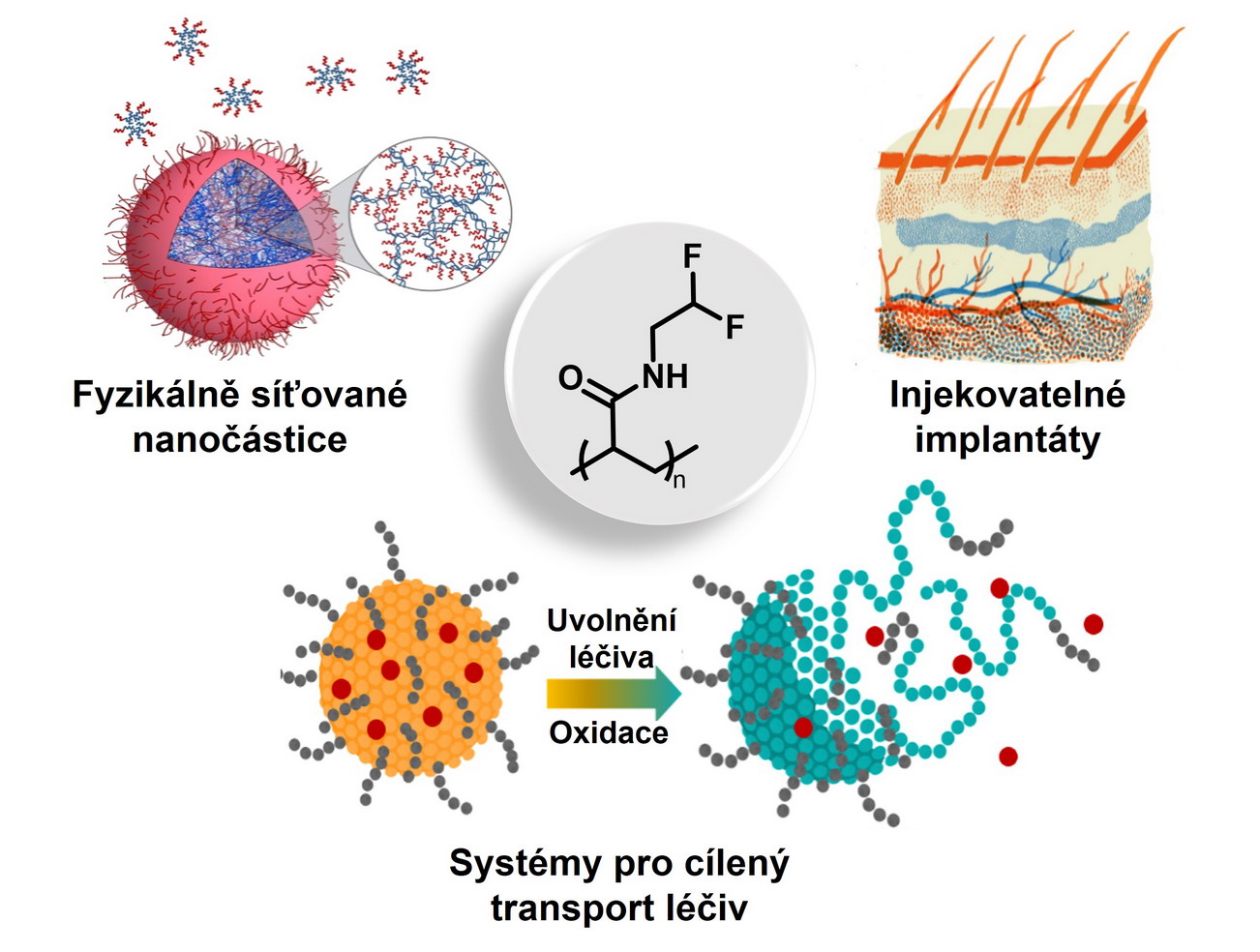Multiresponsive Polymer Tracers for ¹⁹F MRI Based on Poly[N-(2,2-difluoroethyl) Acrylamide]
This article is part of the series Women in Czech Chemistry
DOI:
https://doi.org/10.54779/chl20220180Keywords:
thermoresponsiveness, ROS-responsiveness, LCST, diagnostic, theranostic, drug delivery systems, polymer depotAbstract
Polymers with lower critical solution temperature (LCST) are molecularly soluble in their solutions at low temperatures but, when heated above their cloud point temperature, these polymers assemble into supramolecular particles or macroscopic precipitates. These particles or precipitated polymeric depots can be used for diagnostics, targeted drug delivery, controlled drug release from a depot or a combination of diagnostics and therapy (theranostics). Herein, we describe smart polymer systems which contain N-(2,2-difluoroethyl)acrylamide monomer unit (DFEA) and form polymeric nanoparticles upon heating or precipitate after injection to polymeric implants/depots. Due to a high fluorine content and to relaxation properties of this element, these polymers are suitable as tracers for the 19F MRI method, a promising non-invasive diagnostic tool. Moreover, DFEA copolymers can contain monomers that react to additional physicochemical properties, resulting in multiresponsive polymers (pH- or redox-responsive), which can be used for smart drug delivery systems with controlled release of drugs in the target environment.





